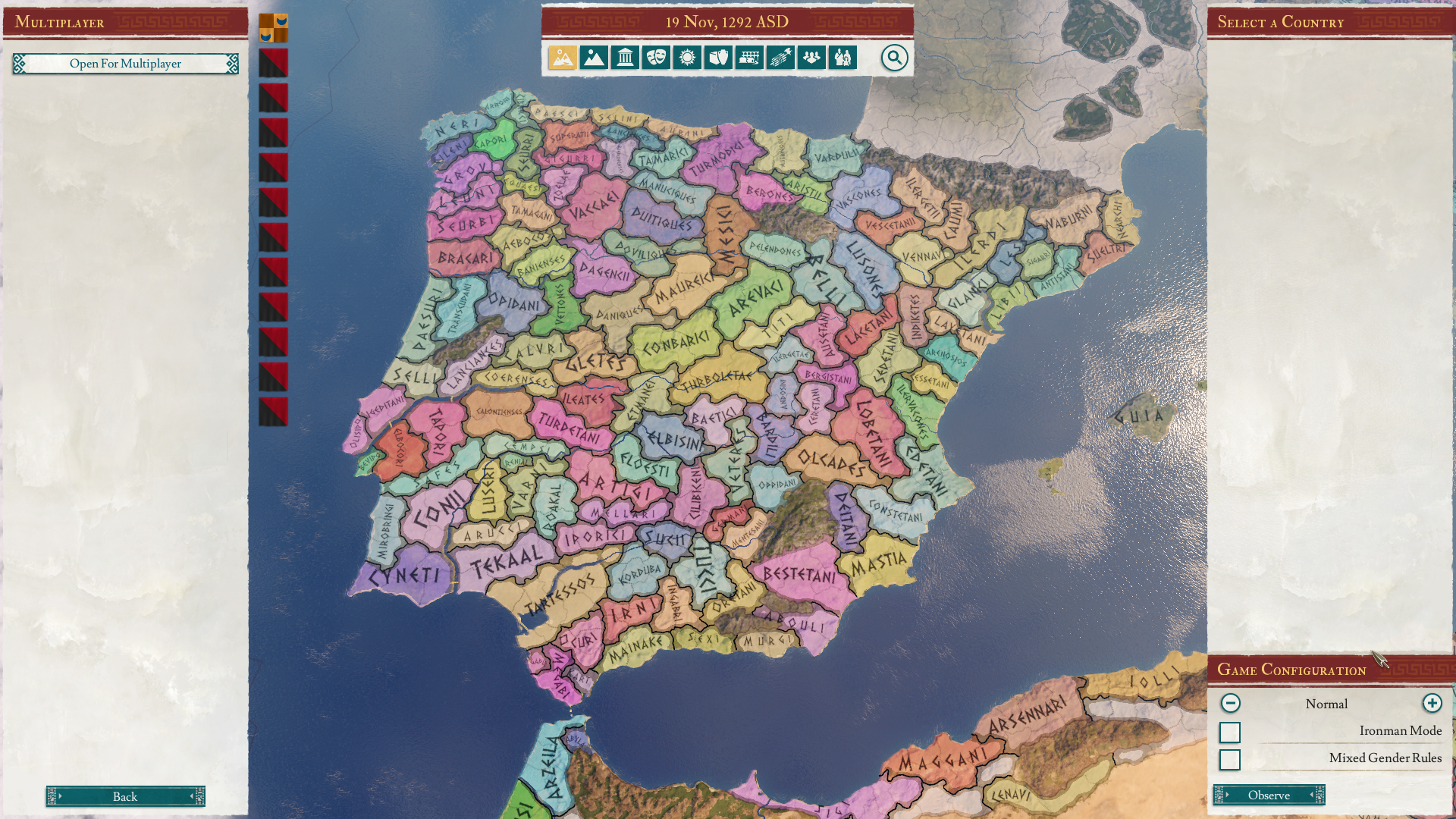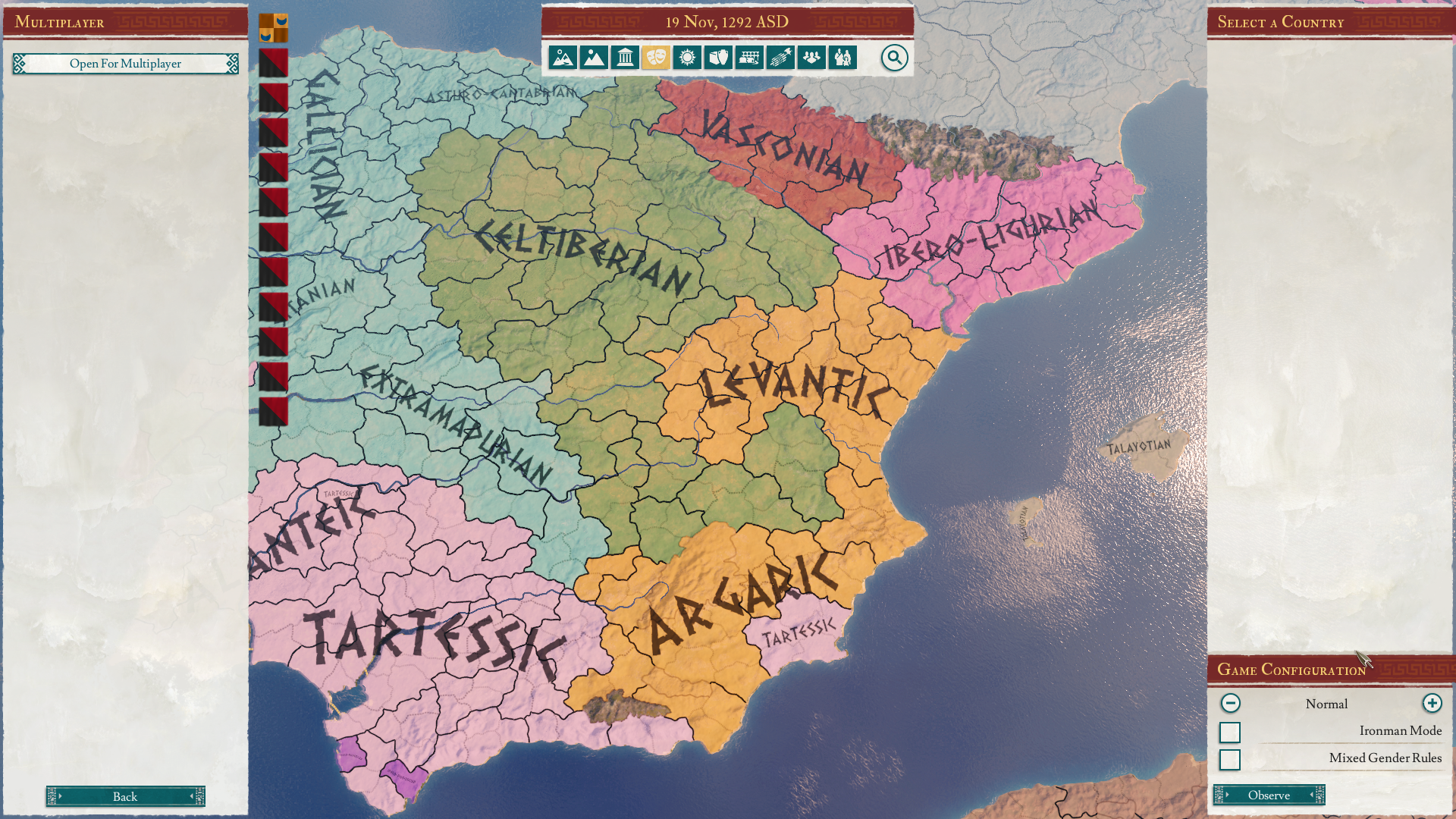Dev Diary 6: Post-apocalyptic Middle East
As I mentioned before, the mod is still under development, so a lot changed and will change. Today we have a very sensitive topic to discuss so it should be interesting. And by the way, I am not particularly religious, nor am I a fanatical atheist, so I will try to be objective (although we know that it is hardthese days

). But before we get into the spicy details, let's go back to Egypt for a moment.


Some time ago I forgot to add that a distant cousin of Siamun was ruling in Thebes at that time. The office of first priest in 984 BCE was held by Pinedjem, who took over from his deceased brother Nesbenebjet, who orphaned two daughters and, according to Egyptian custom Pinedjem, took care of them and ......................... took one for his wife.
And here is a certain discord because in this period there was a slight chaos in Egypt and there are many inaccuracies, for example Pinedjem had a son with a previous wife named Psusennes, who succeded him in office and in Tanis the last pharoh of 21-st dynasty had the same name Psusennes. Has there been a small attempt by the Egyptians to retain power with the help of the Thebes lineage? We know that after the revolt of Osorcon, Siamun bribed some of the rebels with high government offices. Perhaps he had given them too much, and that would be enough for the Libyan chiefs of ma to gain control of Egypt.
But that's about Egypt (for now, because I have a strange feeling that we'll be back there again). We come to the main topic, the situation in the Levant.
And here it would be worth saying something about the new and old inhabitants of this region. First, the Canaanites in the later Bronze Age split into the Northern (from which the Phoenicians evolved) under Hurrian influence, and later Hittite and Southern under Egyptian rule. The Egyptians themselves never exercised too much control over Canaan, because they didn't really like to leave the country because of their religion (probably it was about the necessity to mummify the corpse). But I know that they kept a network of garrisons at strategic points like at Beth-Shan (North-South road). After fending off the Sea Peoples from the delta, Pharaoh realized that he would not be able to resist such invasions indefinitely and decided to hand over Canaan to the invaders, possibly in exchange for a vassal contract. When the invasions from the west ended, the second wave began.
Then the weakened states were attacked by the Aramaic (Ahlamu), who are sometimes combined with the Bronze Age Amurru because of the similarity of names and region of origin. Many of the Aramaic tribes had lived beyond Jordan for centuries, and the Israelites were probably just such a tribe. The disappearance of great empires must have been like a miracle for them, and in addition, climate change meant that the lands that were not suitable for cultivation could be just right for them (their economy was based on herding, so they did not need complicated irrigation systems for now). From Merneptah's stele, dated 1224–1208 B.C.E. we know that he carried out a successful campaign against a people (not a state, but a group of nomads, he marked it) called the Israelites. This is the first mention because the term Hebrew in the language of the Canaanites meant hmmm how to put it ............ a nomadic group of well-armed people who were sometimes hired for military campaigns. We have references to the Hebrews throughout the Levant, and they may or may not be Israelites. Moving on to David himself, he is most likely a historical figure and that's all we know. This is evidenced by references from the Moabites and Arameans of Damascus calling the Judah dynasty the House of David. In addition, I postponed his conflict with Ishbaal (that is most likely his name, because Ishbosheth is an insult as far as I know) because at the same time Egypt was slightly busy

otherwise he would have reacted faster, which happened when Shosqenq started supporting separatists from northern tribes . As for the division into northern and southern tribes, we know, for example, that the inhabitants of the north ate pork because bones were found there, and not in the south, which suggests a greater orthodoxy of the local population.

As for the religion of the inhabitants of the region, I know that the main god of the Moabites was Shamash, so at least at the beginning the Aramaeans had greater sympathy for the Mesopotamian pantheon, later taking over the Canaanite gods also. The problem arises with the Jewish religion which, according to some, was monolathric at first (i.e. other gods exist but mine is better and i worship him exclusively) which may explain two sacrificial altars with an altar for the main deity on one side. Another explanation is that Judaism was initially polytheistic and became monotheism due to contact with the Zoroastrians at the end of Judah's existence, and the second altar (possibly Ashera's diety from one of inscriptions) was then removed. Either way, the Edomites partially and a few tribes south of Judah also worshiped a god named YHWH (as one of dieties). I have something to think about, and maybe you also have some ideas.


I also added the family of David from the Mother side, Nahash, and half-brother Hannun, as well as two sisters. Nahash and his son supported David's brother during his escape and provided his army with the support of trusted officers.
I have also added other biblical characters like the Hadadezer of Sovah.
I'm not sure, but Hiram was reportedly helping Solomon with the construction of the temple. In any case, at that time Tire was being ruled by Abibaal his father and the whole dynasty was from Sidon so maybe Tire was under the sovereignty of that city or the dynasty had moved.
In the letters from the kings of Pattina and Hamat there is a ruler with a Philistine sounding name Toi. Historians believe that there was a Philistine state in the north, including Pattina, Lakhuti and Hamath, but the former revolted, which may explain the desire for good relations with Israel.
Karkemish was an important center for the Hittites, therefore power over it was given to members of the ruling family. About 984 BC its last living representative ruled there.

During the reign of Ashur-Rabbi, Assyria lost territory to the west, and the Aramaeans managed to break through their defenses north and south of Karkemish. The rulers of Assyria did not report defeats, but from the information we have (they carried out numerous campaigns beyond the Euphrates, which gave nothing) we can conclude that the enemy's tactic was guerrilla warfare. The Assyrians themselves, after this cataclysm, began to perceive the lands outside their domain as hotbeds of chaos, and annual war campaigns as a religious duty. To end the crisis, they began to use the so-called practical violence, i.e. in short, at the beginning, a warning, then when they had to send the army, they conducted a "show" of torture skills under the walls, and when they had to attack, they destroyed entire cities and the population was deported to distant corners of the empire. The ruler of the defeated people was publicly tortured and killed. So biblical descriptions are not so wrong.


Meanwhile, the situation was the same in Babylon. State was ruled by the Kassite clan from the city of Bazz (it is not known where exactly), where the capital of the country was moved for safety. Bad situation was taken advantage of by a migrant of Elamite origin, about whom little is known but must have been well remembered because he was buried with honors in Sargon's palace (it does not necessarily mean that Sargon's palace, but that he was buried as the rightful ruler). Since Babylon was very cosmopolitan (to put it mildly) it didn't have to come from Elam (but he could).
As for the situation in Elam, we know that Susa was still an important and great city but Anshan lost many of its inhabitants. But Elam still controlled the city. However, this could mark the first attacks of the Persians. As for the rulers there, we do not have certain dates, only a few names.

I also added Heraclids in several Greek countries but it still needs to be refined. Surely you noticed that I added bloodlines to the more important characters (about 17 boodlines so far). I don't know if you like the combination of mythical characters with real ones. For example, we know that Assyria negotiated with a Phrygian king named Mita. So we know that at least the name is correct. To sum up whether the Bible can be considered a historical source, yes. Although, as we know, someone had to copy, publish and approve it. Historians often consider the event to be historic as they have at least two mentions, e.g. copies of the Egyptian and Hittite peace treaty after the Battle of Kadesh. So when a biblical event is mentioned in another source, it probably really happened (but as you know, the devil is in the details). Until next time.










































